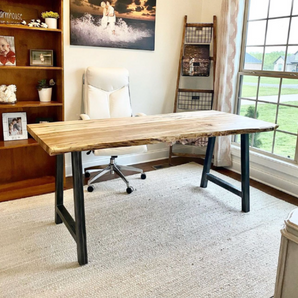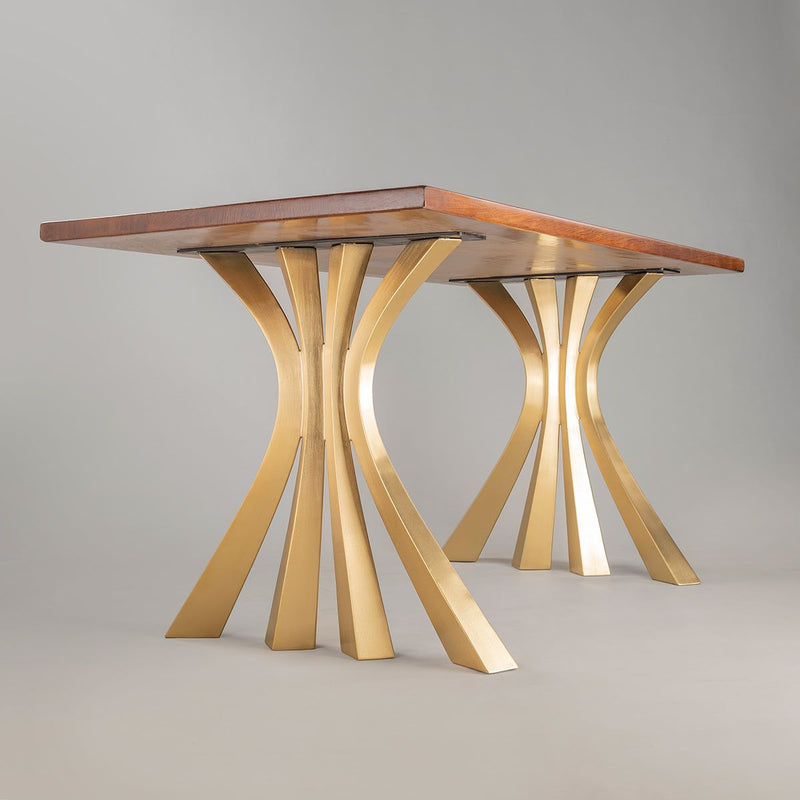Picking the Perfect Table: What Styles Work Best for Your Home?
Choosing the perfect table for your home can be a nuanced process that stabilizes aesthetics and performance. Whether your room leans in the direction of typical style, modern minimalism, rustic beauty, or commercial posh, the selection of styles readily available can accommodate varied tastes. Each design supplies distinct advantages and difficulties that can either enhance or disrupt your dining area's harmony. Recognizing how different products, shapes, and sizes communicate with your existing decor is critical. To browse these options properly and locate a table that truly complements your home, take into consideration the complying with elements thoroughly.
Examining Your Space
Examining the dimensions and design of your dining location is a crucial initial step in picking the excellent dining table. Begin by gauging the size and width of the area, representing doorways, windows, and various other architectural functions that might affect table placement. This makes sure that your table not just fits yet likewise enables comfortable movement around it.
Consider the variety of individuals you typically captivate. A table needs to suit your home's everyday needs while providing adequate adaptability for occasional visitors. Generally of thumb, allocate at the very least 24 inches of table width each to ensure a comfortable eating experience.
It's likewise important to preserve appropriate clearance around the table. Preferably, there need to be at least 36 inches between the table edge and wall surfaces or various other furniture, allowing very easy access and motion. For spaces where chairs with arms or extra storage space systems like buffets are entailed, boosting this clearance to 48 inches is advisable.
Lighting and ambience play considerable functions too. Make certain that your eating table aligns with existing illumination components or prepare for ample lights options. This thorough spatial assessment guarantees that your eating table not just fits physically however also harmonizes with your space's total performance and aesthetic.
Popular Table Styles

Conventional table typically feature ornate information, bent legs, and rich timber coatings, stimulating a feeling of classic elegance. They are best for homes with timeless design or those looking to include a touch of class to their eating area.
Modern dining tables focus on simpleness and clean lines, often integrating products like glass and metal. These tables are ideal for modern rooms, giving a streamlined and minimalist appearance that enhances minimalist style approaches.
Rustic table, on the various other hand, highlight all-natural products and a handcrafted appearance - dining room table legs. They often feature recovered wood and a troubled surface, developing a cozy and inviting ambience. These tables work well in farmhouse-style homes or those looking for a comfortable, natural feeling
Industrial dining tables combine basic materials such as metal and wood, commonly showcasing an utilitarian visual. This style is fit for lofts or urban spaces, adding a touch of tough appeal and longevity to the eating experience.
Each design offers distinctive advantages, making it vital to select one that straightens with your home's general design and your individual preferences.
Material Options
When selecting a table, the option of product plays a vital role in identifying both the table's visual appeals and capability. Wood, metal, glass, and composite materials each offer one-of-a-kind benefits and challenges, making it crucial to line up the product with your home's decor and lifestyle needs.
Wood is an ageless and flexible option, readily available in ranges such as oak, walnut, and mahogany. Known for its longevity and heat, wood matches both standard and contemporary insides. However, it needs routine upkeep to avoid scrapes and bending.
Steel tables, frequently crafted from stainless steel, aluminum, or functioned iron, are applauded for their modern charm and effectiveness. They are especially fit for commercial or minimal setups however can be vulnerable to damages and might feel cool to the touch.
Glass eating tables bring an air of beauty and visibility, suitable for smaller spaces as they develop an illusion of even more space. While simple to clean, glass can be at risk to spots and calls for cautious taking care of to avoid chips and splits.
Composite materials, such as MDF and plywood, offer cost-effective and personalized remedies, though they might lack the longevity of all-natural products. Picking the best product ensures your eating table is both a functional possession and a visual joy.
Sizes And Shape Factors To Consider
After figuring out the suitable product for your table, the Read Full Article following factor to consider is selecting the ideal shape and dimension to match your room. The form of the table significantly influences the room's visual and functionality. Rectangle-shaped tables, the most common shape, are optimal for larger areas and can suit a higher variety of visitors. They also permit for an extra formal eating experience. Conversely, round tables promote a feeling of affection and are superb for smaller sized eating areas, encouraging discussion by removing edges and making everyone really feel just as included.
As a rule of thumb, allot at the very least 24 inches of table size per individual to make sure comfortable dining. In addition, consider the table's clearance space: there ought to be at least 36 inches in between the table side and the wall surfaces or various other furniture. Prolonging tables use flexibility if you frequently host bigger events, giving added more tips here seating when required without inhabiting additional area daily.
Matching Your Style
Picking an eating table that integrates with your existing design is critical in creating a cohesive and welcoming room. A streamlined, minimalist table with tidy lines is excellent for a contemporary home, while a vintage, ornate table suits a much more traditional setting.
Shade and product are similarly significant. If your design includes warm tones and natural materials, take into consideration a wood table to enhance the natural feel. Conversely, a glass or metal table may be better suited in an area dominated by cool shades and industrial elements. Pay interest to the surface, as it should mirror various other furniture and fixtures to maintain consistency.
Structure plays a critical function. A rough-hewn, recovered timber table can include personality to a rustic space, while a polished marble surface area can raise an extravagant dining area. Think about the scale and percentage of the table in relationship more to the space dimension and existing furnishings. A well-matched dining table not just improves visual allure but also enhances the general dining experience.

Conclusion
Picking the optimal eating table necessitates cautious consideration of space, design, materials, form, and dimension (dining room table legs). Typical tables enhance classic interiors with abundant wood surfaces, while modern tables suit contemporary setups via glass and steel. Rustic designs introduce warmth using all-natural materials, and commercial designs enhance city environments with raw aspects. Balancing the eating table with existing style makes certain both capability and visual appeal, adding to a natural and cosmetically pleasing eating area.